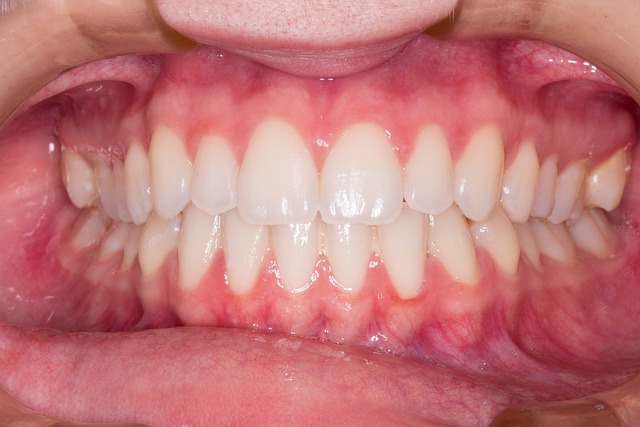Invisible Dentures – Modern and Comfortable Design
Advancements in dental prosthetics have transformed the way people approach tooth replacement. Invisible dentures represent a significant leap forward, combining aesthetics with functionality to offer wearers a discreet and comfortable solution. These modern appliances are crafted from innovative materials that blend seamlessly with natural gum tissue, making them virtually undetectable. For those seeking a confident smile without the telltale signs of traditional dentures, understanding the design and benefits of these contemporary options is essential.

The evolution of dental technology has brought about remarkable improvements in how dentures are designed and worn. Unlike conventional dentures that often feature visible metal clasps or rigid acrylic bases, invisible dentures utilize flexible, tooth-coloured materials that adapt to the contours of the mouth. This shift towards more natural-looking prosthetics has made it easier for individuals to maintain their confidence in social and professional settings.
The demand for discreet dental solutions has grown considerably, driven by a desire for both aesthetic appeal and practical comfort. Modern invisible dentures address these needs by offering a lightweight, durable alternative that supports everyday activities without compromise. Whether eating, speaking, or laughing, wearers can enjoy greater peace of mind knowing their dental appliance remains inconspicuous.
Understanding Flexible Invisible Denture Design
Flexible invisible dentures are constructed from thermoplastic materials such as nylon-based resins, which differ significantly from the hard acrylic used in traditional dentures. These materials possess a degree of elasticity, allowing the denture to flex slightly during wear. This flexibility contributes to a more secure fit, as the appliance can adapt to minor movements and changes in the mouth’s shape over time.
The absence of metal clasps is one of the defining features of invisible dentures. Instead of relying on visible metal hooks to anchor the denture to adjacent teeth, flexible dentures use gum-coloured extensions that grip the natural gum line. This design choice not only enhances aesthetics but also reduces the risk of damage to remaining natural teeth. The material’s translucency allows it to blend with the natural colour of the gums, making the denture far less noticeable.
Another advantage of flexible design is its lighter weight compared to traditional alternatives. This reduction in bulk can lead to a more comfortable wearing experience, particularly for individuals who are new to dentures or have sensitive oral tissues. The material’s smooth surface also minimizes irritation, which is a common concern with rigid dentures that may rub against the gums.
Natural Fit and Comfort in Daily Wear
Achieving a natural fit is paramount for any dental prosthetic, as an ill-fitting denture can cause discomfort, difficulty eating, and even speech impediments. Invisible dentures are custom-made to match the unique contours of each individual’s mouth, ensuring a snug and secure fit. The initial fitting process involves taking precise impressions of the gums and remaining teeth, which are then used to create a denture that sits comfortably without excessive movement.
The flexibility of the material plays a crucial role in daily comfort. Unlike rigid dentures that may require adhesives to stay in place, flexible invisible dentures often rely on their inherent grip and adaptability. This can reduce the need for messy adhesives, simplifying the daily routine for wearers. However, some individuals may still choose to use a small amount of adhesive for added security, particularly during the adjustment period.
Comfort in daily wear also depends on proper oral hygiene and regular maintenance. Invisible dentures should be cleaned daily with a soft brush and non-abrasive cleanser to prevent buildup of bacteria and staining. Regular dental check-ups are important to ensure the denture continues to fit well and to address any adjustments that may be needed as the mouth’s shape changes over time.
Achieving a Discreet Smile with Modern Materials
The materials used in invisible dentures are specifically chosen for their ability to mimic the appearance of natural gum tissue and teeth. High-quality thermoplastic resins can be tinted to match the exact shade of a patient’s gums, creating a seamless transition between the denture and the natural oral tissues. This attention to detail ensures that even close inspection reveals little evidence of the prosthetic.
Modern manufacturing techniques, including digital scanning and computer-aided design, have further improved the precision and aesthetics of invisible dentures. These technologies allow dental professionals to create highly accurate models of the mouth, resulting in dentures that fit better and look more natural. The teeth attached to the denture base are also carefully selected to match the size, shape, and colour of the patient’s original teeth, contributing to an authentic appearance.
For individuals concerned about the visibility of their dental work, invisible dentures offer a level of discretion that was not possible with older designs. The elimination of metal components and the use of translucent materials mean that even when smiling broadly or speaking, the denture remains virtually undetectable. This can significantly boost confidence and quality of life for wearers.
Adapting to Daily Activities with Invisible Dentures
Adjusting to any new denture requires a period of adaptation, and invisible dentures are no exception. In the initial days and weeks, wearers may experience increased saliva production, minor speech changes, or a sensation of fullness in the mouth. These effects are normal and typically subside as the mouth becomes accustomed to the presence of the denture.
Eating with invisible dentures requires some practice, particularly when it comes to harder or stickier foods. It is generally recommended to start with softer foods and gradually introduce more challenging textures as confidence grows. Chewing evenly on both sides of the mouth can help maintain balance and prevent the denture from shifting. Avoiding extremely hard or sticky foods can prolong the life of the denture and reduce the risk of damage.
Speaking clearly with a new denture may take a bit of time as well. Certain sounds, particularly those involving the tongue pressing against the roof of the mouth, can feel different at first. Practicing by reading aloud or repeating difficult words can help speed up the adjustment process. Most wearers find that their speech returns to normal within a few weeks.
Maintaining good oral hygiene is essential when wearing invisible dentures. The denture should be removed at night to allow the gums to rest and to facilitate thorough cleaning. Rinsing the mouth and cleaning any remaining natural teeth helps prevent infections and keeps the oral environment healthy. Storing the denture in water or a recommended soaking solution prevents it from drying out and losing its shape.
Considerations and Maintenance
While invisible dentures offer many benefits, they may not be suitable for everyone. Individuals with significant bone loss or certain oral health conditions may require alternative solutions such as implant-supported dentures. A thorough consultation with a dental professional is necessary to determine the best option based on individual needs and oral anatomy.
The lifespan of invisible dentures can vary depending on factors such as material quality, wear patterns, and maintenance practices. On average, flexible dentures may last between five to eight years, though this can be extended with proper care. Regular dental visits allow for adjustments and early detection of wear, ensuring the denture continues to function effectively.
It is important to handle invisible dentures with care, as the flexible material, while durable, can be damaged by excessive force or improper cleaning methods. Avoid using hot water, which can warp the material, and steer clear of harsh chemicals that may degrade the resin. Following the manufacturer’s care instructions and seeking professional advice when issues arise will help maximize the longevity and performance of the denture.
Conclusion
Invisible dentures represent a modern approach to tooth replacement that prioritizes both aesthetics and comfort. Through the use of flexible, gum-coloured materials and innovative design techniques, these dentures offer a discreet solution that blends seamlessly with natural oral tissues. Understanding the features and benefits of flexible invisible denture design, the importance of a natural fit, and the role of modern materials in achieving a discreet smile can help individuals make informed decisions about their dental health. With proper adaptation and maintenance, invisible dentures can support daily activities and enhance quality of life, providing a confident smile that feels as natural as it looks.
This article is for informational purposes only and should not be considered medical advice. Please consult a qualified healthcare professional for personalized guidance and treatment.




